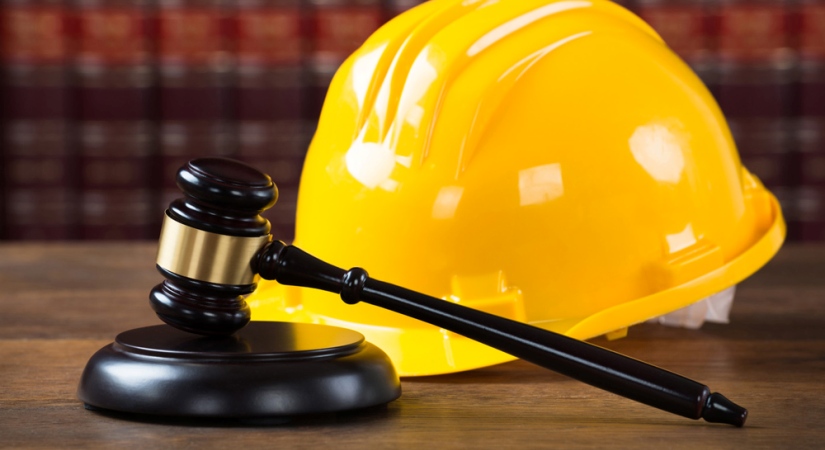Book Appointment Now

Legal Insights for Your Next Project: A Guide to Building and Construction Law
Building and construction projects involve a myriad of legal considerations. Understanding the basics of building and construction law is essential for successful project management and avoidance of potential legal pitfalls. This article provides a comprehensive guide to navigating the intricacies of construction law, highlighting key terms and concepts, common legal challenges, contract management, insurance requirements, and environmental and safety regulations.
Understanding the Basics of Building and Construction Law
Key Terms and Concepts in Construction Law
In order to navigate the complex field of building and construction law, it is important to familiarize yourself with key terms and concepts that are commonly encountered in the industry. These include:
- Lien rights: The legal claim that construction professionals have against a property to secure payment for work done.
- Change orders: Written requests to alter the scope of work, timeframes, or contract terms, usually due to unforeseen circumstances or client requests.
- Indemnification clauses: Provisions in contracts that allocate responsibility for losses or damages between parties.
Understanding these terms is crucial for effective communication and negotiation in construction projects. Lien rights, for example, empower contractors and subcontractors to seek payment for their services by placing a claim on the property. Change orders are essential for documenting any modifications to the original contract, ensuring clarity and preventing disputes down the line. Indemnification clauses help allocate risk fairly between parties, protecting each other from potential liabilities.
The Role of Law in Construction Projects
Construction projects are inherently surrounded by legal frameworks that exist to protect the rights and interests of all parties involved. The law plays various roles throughout the project lifecycle, including:
- Regulating safety standards and ensuring compliance with environmental regulations.
- Establishing rules for contract formation, interpretation, and enforceability.
- Providing mechanisms for resolving disputes and enforcing contractual obligations.
Compliance with safety standards and environmental regulations is paramount in construction to ensure the well-being of workers and the community. Contract formation rules govern how agreements are made, what terms are included, and how they can be modified, providing a framework for fair dealings. Dispute resolution mechanisms, such as mediation or arbitration, offer alternatives to costly litigation, promoting efficiency and preserving business relationships.
Navigating Legal Issues in Construction
Legal issues are an inevitable part of the construction industry, with projects often facing a myriad of challenges that can lead to disputes and complications. Understanding and addressing these challenges is crucial for the successful completion of any construction project.
Common Legal Challenges in Construction Projects
Construction projects often encounter a range of legal challenges. Some of the most common include:
- Contract disputes: Disagreements over contract terms, delays, or dissatisfaction with work performed.
- Construction defects: Issues with the quality of work or materials used.
- Non-payment: Disputes related to payment for services rendered.
Contract disputes can arise due to ambiguous contract language, differing interpretations of contractual obligations, or unexpected circumstances that were not clearly addressed in the initial agreement. Construction defects can result from poor workmanship, the use of substandard materials, or failure to meet industry standards and building codes. Non-payment issues can stem from disputes over work quality, delays in project completion, or financial difficulties faced by project stakeholders.
Strategies for Avoiding Legal Pitfalls
While encountering legal issues is not always avoidable, there are strategies that can minimize the risk of disputes and legal complications:
- Clear communication: Maintaining open and transparent communication with all stakeholders throughout the project is essential for addressing issues promptly and effectively.
- Diligent documentation: Keeping detailed records of all project-related activities, including changes, approvals, and correspondence, can provide valuable evidence in case of disputes or legal proceedings.
- Thorough contract review: Ensuring contracts are carefully reviewed, understood, and negotiated before signing is crucial for clarifying expectations, responsibilities, and potential risks for all parties involved.
Implementing these strategies proactively can help construction professionals navigate legal challenges more effectively and protect their interests throughout the project lifecycle.
The Importance of Contracts in Construction Law
Contracts are the backbone of the construction industry, providing a roadmap for all parties involved in a project. Beyond the basic legal requirements, a well-crafted construction contract serves as a crucial tool for managing expectations, mitigating risks, and ensuring project success. It is not just a piece of paper but a dynamic document that evolves with the project, reflecting changes, clarifications, and agreements made along the way.

Elements of a Solid Construction Contract
When drafting a construction contract, attention to detail is paramount. In addition to the key elements mentioned, it is essential to address other crucial aspects such as insurance requirements, warranties, change orders, and termination clauses. These provisions help safeguard the interests of both parties and provide a clear framework for addressing unforeseen circumstances or disagreements that may arise during the project.
- Scope of work: Clearly defining the project objectives, deliverables, and timelines is essential for setting expectations and avoiding misunderstandings.
- Payment terms: Outlining how and when the contractor will be compensated for their services ensures transparency and helps prevent payment disputes.
- Dispute resolution provisions: Specifying mechanisms for resolving disputes, such as mediation, arbitration, or litigation, promotes timely and efficient resolution of conflicts, minimizing project delays and costs.
Resolving Contract Disputes in Construction
Despite best efforts in contract drafting, disputes may still arise in construction projects due to various factors such as design changes, delays, or unforeseen site conditions. When faced with a contractual disagreement, parties can employ various strategies to reach a resolution and keep the project on track.
- Communication: Engaging in open and honest communication between parties is key to identifying the root cause of the dispute and exploring potential solutions.
- Negotiation or mediation: By seeking common ground and exploring compromise through negotiation or mediation, parties can often reach a resolution that preserves their working relationship and project progress.
- Litigation or arbitration: In cases where informal resolution methods fail, pursuing legal action through litigation or arbitration may be necessary to enforce contractual rights and seek a binding decision from a third party.
The Role of Insurance in Construction Law
Types of Insurance in Construction
Insurance is a crucial aspect of construction law, protecting parties from potential risks and liabilities. In the complex world of construction projects, various types of insurance play a vital role in safeguarding stakeholders. General liability insurance stands as a shield, covering bodily injury, property damage, and personal injury claims that may arise during the course of a project. Builder’s risk insurance steps in to provide coverage for property and equipment specifically during the construction phase, offering a safety net against unforeseen events that could disrupt progress. Additionally, professional liability insurance acts as a safeguard, protecting against claims of professional negligence or errors that could lead to legal disputes. Learn more about empowering your workforce with Chamberlains HR solutions.
Understanding Liability and Risk Management
Effectively managing liability and risk is essential in construction projects to ensure smooth operations and successful outcomes. Proper risk management involves a multifaceted approach that begins with identifying potential risks that could impact the project’s timeline, budget, or quality. By establishing robust mitigation strategies, construction professionals can proactively address and minimize these risks, enhancing project resilience. Moreover, ensuring that adequate insurance coverage is in place is a critical component of risk management, providing a financial safety net in case of unexpected events. Alongside insurance, implementing and enforcing comprehensive safety protocols on construction sites is paramount to mitigate risks and maintain a secure working environment for all involved parties.
Environmental and Safety Regulations in Construction Law
Complying with Environmental Laws in Construction
Construction projects must adhere to various environmental laws to minimize negative impacts on the environment. Compliance measures may include:
- Proper waste disposal and recycling practices.
- Stormwater management to prevent pollution.
- Protection of habitats and endangered species.
Environmental regulations in construction law are designed to safeguard ecosystems, prevent pollution, and promote sustainable development. Proper waste disposal involves segregating materials on-site, recycling where possible, and ensuring hazardous materials are handled and disposed of in accordance with regulations. Stormwater management techniques include implementing erosion control measures, using silt fences, and creating retention ponds to prevent sediment runoff into water bodies.

Ensuring Safety Compliance on Construction Sites
Construction sites pose inherent risks, making safety compliance a top priority. Important safety measures include:
- Proper training and certification for all personnel.
- Maintaining a safe and organized work environment.
- Regular inspections and audits to identify and address potential hazards.
Safety compliance in construction law aims to protect workers, visitors, and the public from accidents and injuries. Proper training ensures that workers are equipped to handle machinery, tools, and materials safely. Maintaining a safe work environment involves implementing signage, barriers, and safety protocols to prevent falls, collisions, and other hazards. Regular inspections and audits help identify potential risks early, allowing for timely intervention and prevention of accidents.
By understanding the key aspects of building and construction law, project managers and stakeholders can navigate legal complexities, protect their interests, and ensure the successful completion of construction projects.
